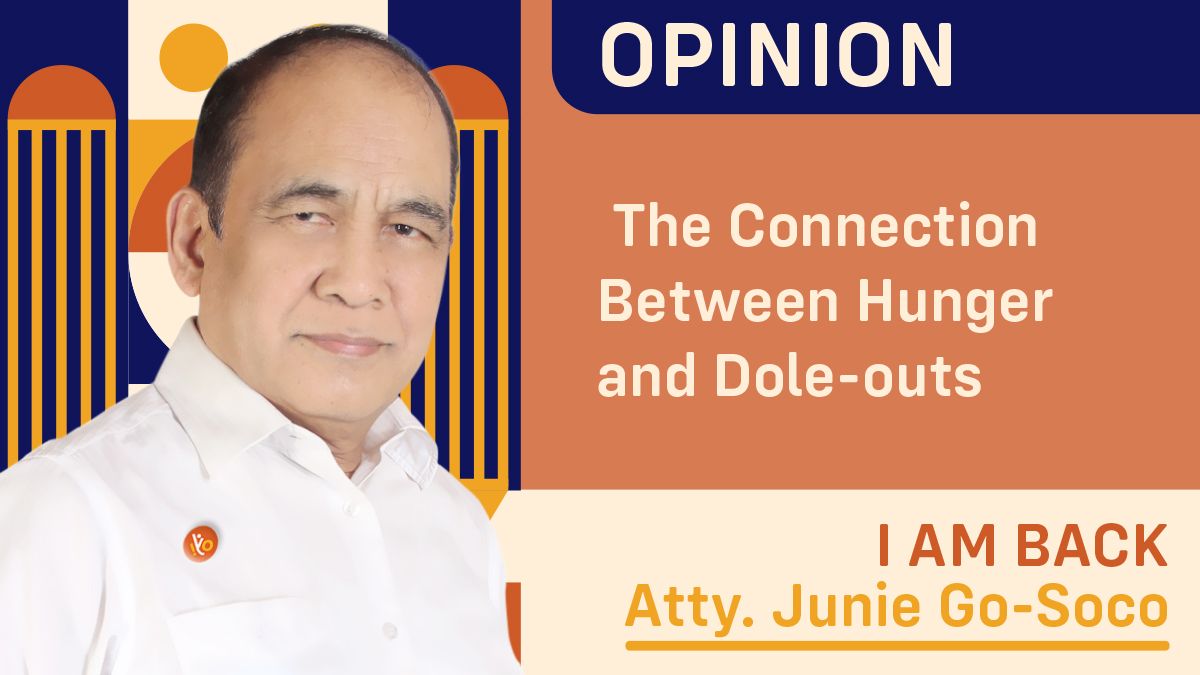An interesting relationship exists between Hunger and Dole-outs like 4 Ps (Pantawid Pamilyang Pilipino Program), TUPAD (Tulong Panghanapbuhay sa Ating Disadvantaged/Displaced Workers), and AKAP (Ayuda Para sa Kapos ang Kita), being distributed as dole-outs. It is a direct fund distribution strategy. It is a shortcut (or is it a short circuit) of the process of allocating funds hopefully making recipients productive and income-generating.
But there is a negative meaning to the term dole-outs. It is a term used to describe handouts granted without conditions so that the recipients become dependent or not motivated to improve their situation through work or other efforts.
Since it is not given year-round, these transfer payments to certain types of individuals should be well-timed, and should be given when these funds are most needed to stave off starvation.
If it is well-timed and is given before harvest time when families use up their savings to pay for food, then it serves a purpose of bridging the gap also termed “pantawid gutom”.
Here the concept of hunger comes into the picture. The dole-out is timed to enable the poor to avoid being hungry and to sustain their level of living and quality of life. Although the purpose can be noble, the implementation is faulty and does not achieve its purpose. Note this.
Despite spending billions of pesos for 2024 dole-outs like 4Ps (112.8 billion pesos), AKAP (26.7 billion, and TUPAD (12.9 billion pesos). Still, this rate of hunger is increasing. According to the SWS hunger increased from 17. 6 to 22.9 percent in June 2024 to 22.9 percent in September 2024. Statistics like these make you wonder. These data imply the hard fact that these dole-outs are not achieving the purpose of combating poverty. In fact, the opposite is true. The more the government gives, the hungrier the poor become.
Instead of dole-outs, there is an emerging view that giveaways should be on enabling the poor to produce more or gain better employment conditions and not for the purchase of goods for immediate consumption.
Also, consider this: of the people admitting that they experience involuntary hunger, 6 percent stated that they experienced severe hunger. This figure is equivalent to 7 million people in a country with a population of 115 million.
This phenomenon is connected with poverty. Our poverty rate is running at around 30 percent of the population, which makes us third from the worst-case region. This applies to the hunger rate which is at 22 percent.
We can also cite the connection of the hunger rate with inflation. With less money to buy food, there is low inflation, but the fact remains that at least a fourth of the population suffers from occasional hunger or the inability to have the money or resources to eat a decent meal.
This clearly shows that even if the government pours in the entire budget of the national government to these dole-outs, still there will be significant poverty and occasional hunger. Why is this happening?
My view is that a substantial amount of funds is not spent effectively to bring down poverty. This is where the dole-outs should be categorized. We, therefore, have a situation where the more money is given out as dole-outs, the more involuntary hunger occurs.
#WeTakeAStand #OpinYon #OpinYonColumn #ColumnbyAttyJunieGoSoco #IAmBack
